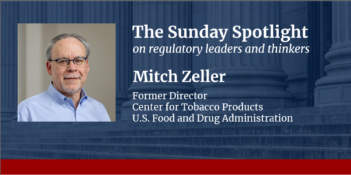
Deregulatory attacks have twisted a legal concept meant only to restrain extraordinary actions.
The Supreme Court has applied the “major questions” doctrine to strike down regulations in only a few exceptional circumstances. But the Trump Administration invoked it routinely to support its deregulatory efforts and did so in inconsistent and expansive ways that were untethered to prior case law. To shed light on the meaning that the Trump Administration ascribed to this doctrine, we reviewed the arguments in the briefs filed by the U.S. Department of Justice in federal appellate courts and the U.S. Supreme Court concerning the doctrine’s scope.
Our analysis of these briefs reveals that the Trump Administration put forth an amorphous and unrestrained account of the doctrine, turning it into little more than an invitation for courts to strike down regulations the Administration did not favor for policy-based reasons. In the hands of Trump’s Justice Department, the major questions doctrine became a weapon that could be wielded as a broadside attack on the administrative state. This pattern is particularly concerning because the Justice Department, unlike individual private litigants, strives to develop a consistent approach to major legal doctrines. Its enormously capacious vision of the major questions doctrine thus suggests that the doctrine lacks judicially manageable standards.
Future invocations of this doctrine––which are likely to now come from Republican Attorneys General opposing Biden Administration regulations and which could once again come from the Justice Department itself in a future administration––should therefore be greeted with great skepticism.
The major questions doctrine is generally traced to the U.S. Supreme Court’s 2000 decision in FDA v. Brown & Williamson Tobacco Corp. The Court stated that “given the economic and political significance of the tobacco industry … it is extremely unlikely that Congress could have intended to place tobacco within the ambit of the Food and Drug Administration’s regulatory jurisdiction,” which it assumed would give the U.S. Food and Drug Administration (FDA) the authority to ban tobacco.
In 2014, in Utility Air Regulatory Group (UARG) v. EPA, the Court further explained that it expects “Congress to speak clearly if it wishes to assign to an agency a decision of vast ‘economic and political significance.’”
Although the Court has not made an effort to define the doctrine’s limits, in both cases it made clear that it regarded the invocation of the doctrine as an extreme, and not a run-of-the-mill, event. In Brown & Williamson, the Court focused on the decades-long congressional rejection of proposals to regulate tobacco—which the majority believed was premised on the view that FDA did not have the authority to ban tobacco. The majority also emphasized the comprehensive statutory scheme to regulate cigarette labeling and advertising. Then, in UARG, the Court focused on how the agency’s action would expand the number of sources regulated by the Clean Air Act program at issue from a few hundred to several million.
The Trump Administration failed to support its invocation of regulatory costs as a basis for its major questions argument against the Clean Power Plan, which regulated the greenhouse gas emissions of existing power plants. The Administration argued that the doctrine was triggered by what it deemed to be the high annual costs of this program—$5.1 billion or $8.4 billion depending on the method of calculation—even though these costs were a small proportion of the industry’s annual revenues of around $400 billion and were significantly exceeded by the rule’s benefits. But the Administration never explained what cost would exceed the threshold for being “major,” nor why it believed the Clean Power Plan’s costs did.
The Trump Administration did not even acknowledge that, five years earlier, the Supreme Court had not raised any major questions concerns in Michigan v. EPA, when it reviewed the U.S. Environmental Protection Agency’s (EPA) mercury and air toxics standards, which had higher annual costs: $9.6 billion. Moreover, according to the annual reports of the Office of Management and Budget, three other environmental regulations had higher annual costs in current dollars than did the Clean Power Plan: the Bush II Administration’s clean air fine particle implementation rule, its review of the national ambient air quality standards for ozone, and the Obama Administration’s greenhouse gas emissions standards for automobiles. The costs of these standards never attracted serious legal scrutiny under the major questions doctrine—a fact the Trump Administration similarly ignored.
In its major questions attack on the Clean Power Plan, the Trump Administration also played fast and loose with the baseline against which the rule’s costs were measured. To see how it did so, consider that the most relevant economic metric concerning the Clean Power Plan was not its expected costs but the fact that its benefits would significantly exceed these costs, delivering large net benefits. This factor, on its own, would have stood in the way of a repeal of the Clean Power Plan, because a repeal would have done “more harm than good” and therefore constituted an “arbitrary and capricious” action under the Supreme Court’s analysis in Michigan v. EPA.
To get around this problem, the Trump Administration argued that the relevant baseline for the arbitrary and capricious analysis was the time of the Clean Power Plan’s repeal, not the time EPA had originally issued it, and that by the time of repeal market forces had already produced the greenhouse gas reductions that the Clean Power Plan would have required. As a result, the Administration claimed that the repeal of the Clean Power Plan would result in no costs and no benefits. But, without even acknowledging the inconsistency, much less justifying it, the Trump Administration argued for an altogether different baseline in its invocation of the major questions doctrine: the costs at the time EPA issued the Clean Power Plan.
The Trump Administration also invoked the major questions doctrine by reference to metrics unrelated to costs, even though such metrics have no support in the case law. For example, in its litigation over the legality of the Deferred Action for Childhood Arrivals (DACA) program, the Trump Administration argued that DACA raised a major question because of the large number of potential and actual beneficiaries of the program—1.7 million people potentially covered by DACA, with nearly 700,000 who had been granted a DACA waiver.
But the Trump Administration did not even acknowledge that many longstanding regulations have much larger numbers of beneficiaries. For example, the EPA’s air quality standards for particulate matter—in conjunction with ozone emissions—have prevented 230,000 premature adult deaths, 2.4 million cases of asthma exacerbation, 17 million lost workdays, and 110 million restricted activity days. These standards have been routinely upheld by the courts, including in a unanimous Supreme Court opinion by Justice Scalia, in Whitman v. American Trucking Associations.
Similarly, the Trump Administration claimed that the Clean Power Plan gave rise to major questions problems because the public’s interest in the rule “was enormous,” as evidenced by the 4.3 million comments submitted in response to the proposed rule. But large numbers of comments are not unusual in complex proceedings. For example, the Trump Administration’s repeal of the Federal Communications Commission’s net neutrality rule produced almost 24 million comments. In that instance, however, the Trump Administration vigorously defended the legality of the rule, despite the far larger number of comments.
In any event, linking the legality of a regulation to the number of comments is unjustifiable given well-understood abuses of the comment process, which were recently documented by the Senate Committee on Homeland Security and Government Affairs, under then-Chairman Senator Rob Portman (R-Ohio). For example, interest groups and even automated computer programs routinely generate thousands of form letters. In the case of the repeal of the net neutrality rule, more than 1,400 comments were filed in the name of the chair of the Foreign Communications Commission, and almost 500 were filed in the names of Donald Trump, Barack Obama, and long-dead individuals, including Richard Nixon, Ronald Reagan, Elvis Presley, and even Adolf Hitler.
As another prong of its major questions assault on the Clean Power Plan, the Trump Administration gave an intent-based account of the doctrine that was untethered to the “vast economic and political significance” standard set forth by the Supreme Court, which, by its terms, is effects-based. The Trump Administration focused on the fact that the Clean Power Plan would have shifted electricity generation from coal to natural gas, and then from coal and natural gas to renewables. It argued that, although environmental regulations regularly result in such generation shifting, the shifting under the Clean Power Plan was problematic because it was “intentional” and not merely “incidental.” Nothing in the case law provides any support for an intent-based inquiry under the major questions doctrine.
The Trump Administration’s amorphous and unrestrained account of the major questions doctrine is particularly worrisome because of the context in which its most sustained invocation took place—its attack on the Clean Power Plan—and of the possible consequences of attaching the major question label to a regulatory action. The invocation of the doctrine to argue against the legality of the Clean Power Plan was inappropriate because the Supreme Court held in Massachusetts v. EPA that greenhouse gases are pollutants for the purposes of the Clean Air Act. And it held in American Electric Power Co. v. Connecticut that EPA has the authority to regulate the greenhouse gas emissions of existing power plants.
Extensive legislative history supports these holdings, and the Trump Administration itself acknowledged EPA’s regulatory authority throughout its litigation against the Clean Power Plan. As a result, its complaint was only about the structure of the regulation; unlike in Brown & Williamson and UARG, the Administration did challenge the agency’s authority to regulate. If major questions issues can arise even when congressional authorization is clear and uncontested, then there is no manageable standard to constrain its use.
As for the consequences of a major questions determination, the traditional understanding is that it eliminates the Chevron deference that would otherwise be accorded to an agency. But in recent years, an alternative account has developed under which a major questions determination is akin to a finding of an unconstitutional delegation. By presenting the full sweep of the Trump Administration’s arguments, we hope to underscore how the major questions doctrine was used, and could in the future be used again, as a tool for the standardless dismantlement of the administrative state.
So far, the courts appropriately have rejected such entreaties. The courts should now go one step further, putting an end to this destructive effort by underscoring that invocations of the major questions doctrine should be limited to exceptional situations—which is all the current case law might support—and should not be used as a tool to challenge any regulation that a litigant simply does not like.





